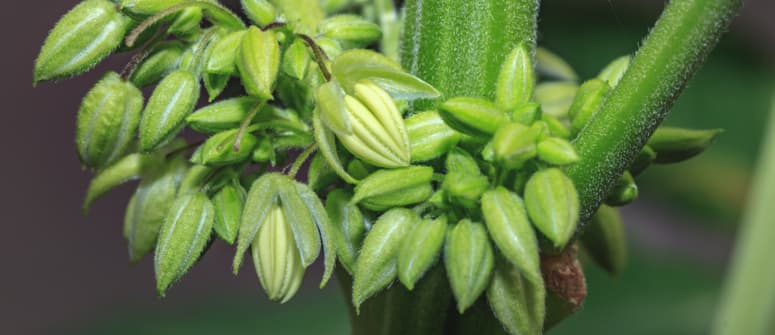Introduction:
One of the key decisions faced by cannabis cultivators is whether to use feminized or regular seeds for their grow operations. Each type of seed comes with its own set of advantages and disadvantages, influencing factors such as yield, genetic variability, and cultivation ease. In this article, we’ll explore the pros and cons of feminized and regular cannabis seeds to help growers make informed decisions about which option best suits their needs.

Feminized Cannabis Seeds:
Feminized seeds are bred to produce only female plants, eliminating the need to identify and remove male plants during the growing process. Here are the pros and cons of using feminized cannabis seeds:
Pros:
- Increased Yield Potential: Since only female plants produce buds, cultivating feminized seeds ensures maximum yield potential, as every plant contributes to flower production.
- Reduced Risk of Pollination: With feminized seeds, the risk of accidental pollination is minimized, preventing the formation of seeds within the buds and preserving flower quality and potency.
- Simplified Cultivation: Growing with feminized seeds eliminates the need to sex plants during the vegetative stage, saving time and effort for growers, especially those with limited space or resources.
- Consistency in Genetics: Feminized seeds offer genetic consistency, as each plant originates from a genetically identical mother, ensuring uniformity in growth characteristics, cannabinoid profiles, and flowering times.
Cons:
- Limited Genetic Diversity: The breeding process for feminized seeds involves manipulating the plants’ genetics to produce only female offspring, potentially reducing genetic diversity compared to regular seeds.
- Higher Cost: Feminized seeds typically command a higher price than regular seeds due to the specialized breeding techniques and increased demand, which may impact the overall cost of cultivation.
- Stability Concerns: Some growers have reported stability issues with feminized seeds, including hermaphroditism or unexpected phenotypic variations, although reputable seed banks strive to minimize these occurrences through rigorous breeding practices.
- Risk of Genetic Drift: Cultivating from feminized seeds exclusively may lead to genetic stagnation over time, as growers rely on a limited pool of genetics, potentially making crops more susceptible to pests, diseases, or environmental stressors.
Regular Cannabis Seeds:
Regular seeds are natural, untreated seeds that have not undergone genetic manipulation to ensure a specific sex. Growers must identify and separate male plants to prevent pollination of females. Here are the pros and cons of using regular cannabis seeds:
Pros:
- Genetic Diversity: Regular seeds offer a broader genetic pool, encompassing both male and female plants, which allows for greater diversity in traits such as flavor, aroma, potency, and resilience to environmental conditions.
- Breeding Potential: Male plants from regular seeds can be used for breeding purposes to create new hybrids or stabilize desirable traits, providing opportunities for innovation and genetic experimentation within the cannabis community.
- Cost-Effectiveness: Regular seeds are generally more affordable than feminized seeds, making them a cost-effective option for growers looking to maximize their seed budget or explore different genetic combinations.
- Natural Selection: Cultivating with regular seeds allows for natural selection processes to occur, as growers can observe and select the most robust and desirable plants for propagation, potentially enhancing crop resilience and adaptability.
Cons:
- Risk of Pollination: Cultivating with regular seeds requires identifying and removing male plants promptly to prevent pollination of females, as seeded buds can diminish flower quality and cannabinoid potency.
- Labor-Intensive Sexing Process: Sexing plants to identify males can be time-consuming and labor-intensive, particularly for large-scale operations, requiring careful inspection and removal of unwanted plants.
- Variable Yield Potential: Since half of the plants from regular seeds will be male, growers may experience variability in yield potential, as only female plants contribute to flower production, necessitating larger populations to achieve desired harvest sizes.
- Increased Risk of Seeded Buds: If male plants are not identified and removed in a timely manner, female plants may become pollinated, leading to the development of seeds within the buds, which can diminish flower quality and market value.
Conclusion:
Choosing between feminized and regular cannabis seeds is a critical decision for cultivators, with each option offering unique advantages and challenges. Feminized seeds provide increased yield potential, simplified cultivation, and genetic consistency but may lack the genetic diversity and stability of regular seeds. Conversely, regular seeds offer genetic diversity, breeding potential, and cost-effectiveness but require more labor-intensive sexing processes and entail the risk of pollination and seeded buds. Ultimately, growers should consider their specific cultivation goals, resources, and preferences when selecting the most suitable seed type for their operations, whether prioritizing maximum yield, genetic diversity, or breeding opportunities.
